The Australian Bureau of Statistics (ABS) on Wednesday released data showing that the nation’s fertility rate—i.e., the average number of registered births per woman aged 15 to 49 years—fell to a record low of 1.481, which is down from 1.795 a decade ago and roughly half the level of the 30 years between 1944 and 1974:
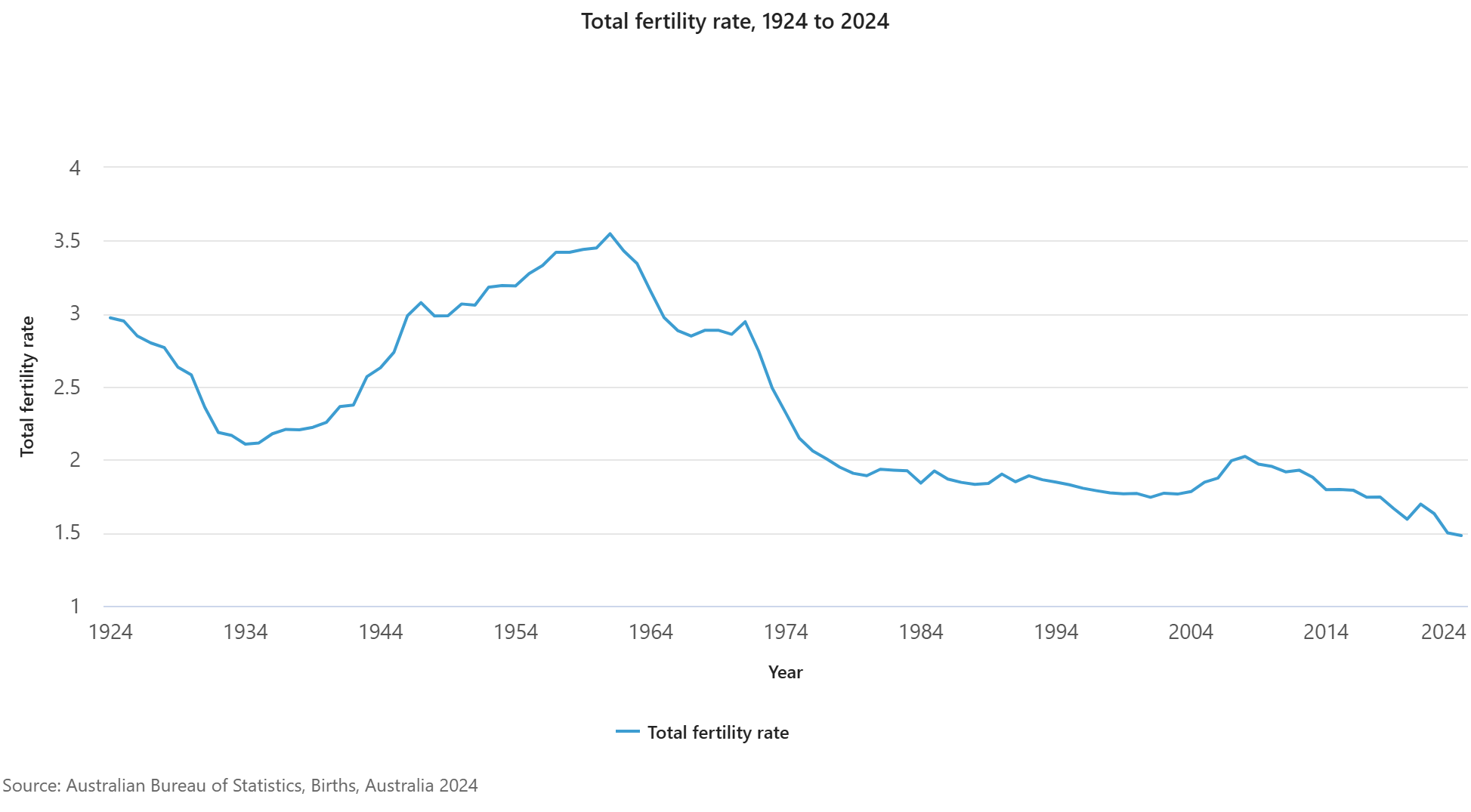
Australia’s crude birth rate—i.e., the number of births per 1,000 estimated resident population—also declined to a record low 10.7 in 2024, down from 12.8 a decade ago.
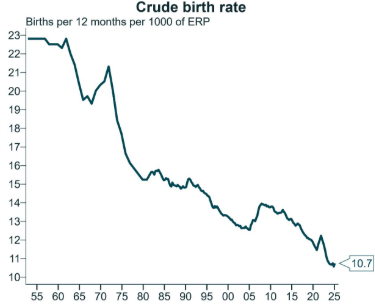
Chart by Alex Joiner (IFM Investors)
The ABS also reported that the median age of parents hit a record high of 33.9 (fathers) and 32.1 (mothers) in 2024.
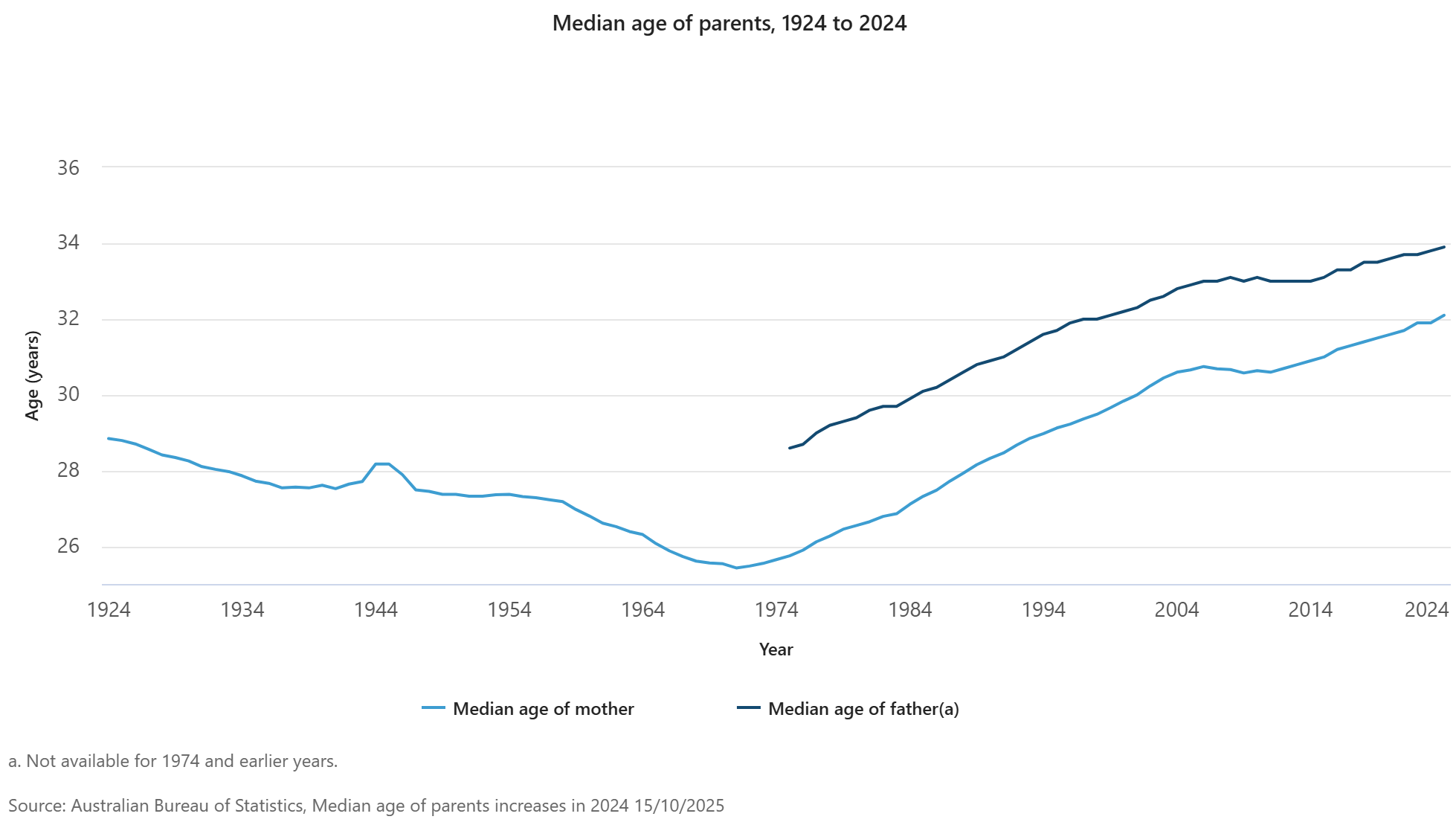
Global fertility rates have also fallen from a peak of 5.4 in 1963 to 2.1 in 2024.
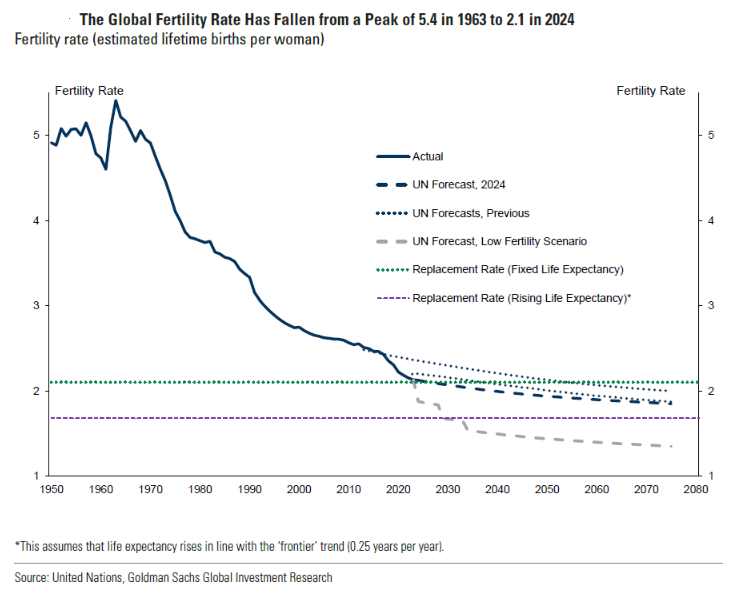
The developed market fertility rate has declined from 1.9 to 1.5 since 1975.
The latest Household, Income and Labour Dynamics in Australia (HILDA) survey from the University of Melbourne, released last month, confirmed that Australians are opting to have fewer children than 20 years ago.
HILDA suggested that the decline in willingness to have children is due to financial concerns.
Women and men rated the general cost of raising children as the most critical factor when deciding to have children. Other financial concerns, such as the partner’s job security, the cost of childcare, and housing, were also ranked highly.
One factor that has received greater focus from academia is the role played by unaffordable housing.
According to a report from the Korea Research Institute for Human Settlements, for each 10% rise in annual housing prices, the total fertility rate declines by 0.02. A 10% yearly rise in rents drives a decline in the fertility rate of 0.0247.
This result adds further weight to the findings of HSBC for Australia, which found that “a 10% increase in house prices leads to a 1.3% drop in birth rates, and an even sharper fall among renters”.
As illustrated below by Cotality (formerly CoreLogic), the cost of purchasing and servicing the mortgage on a home was at a record high at the end of 2024, alongside the cost of renting.
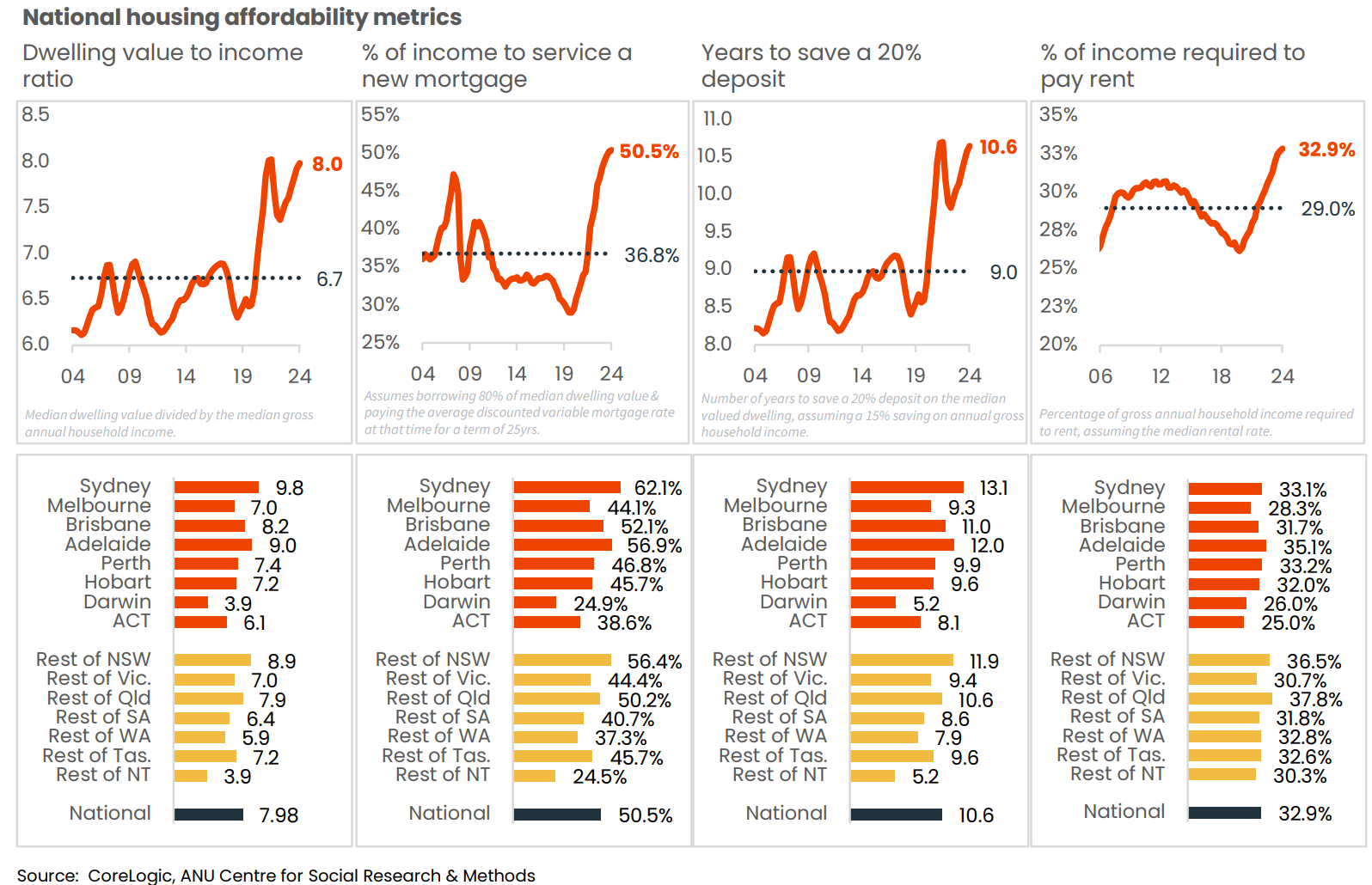
Thus, rising housing costs must certainly be playing a role in Australia’s falling fertility rate, although it certainly isn’t the only driver.
Historically high immigration rates have also generated a negative feedback loop. High migration rates, along with a scarcity of housing, have driven up home prices and rents. This, in turn, has contributed to a decreased fertility rate, leading the government to implement high immigration policies to offset population ageing.
As a result, net overseas migration now comprises a historically large share of Australia’s population growth.
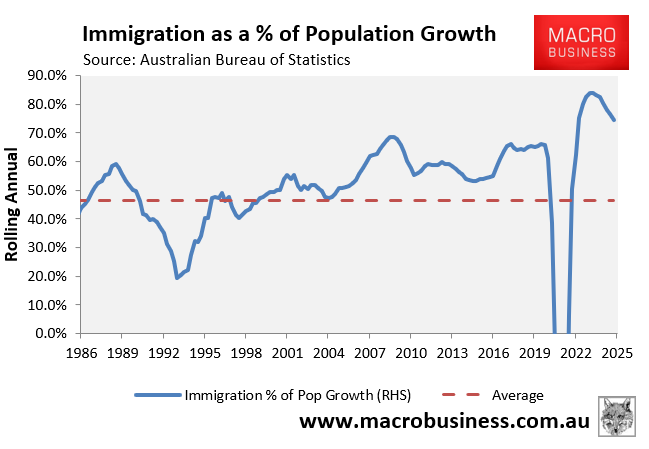
Immigration-driven population growth has also altered the composition of housing in our main cities, from family-friendly houses with backyards to family-unfriendly one- and two-bedroom high-rise apartments.
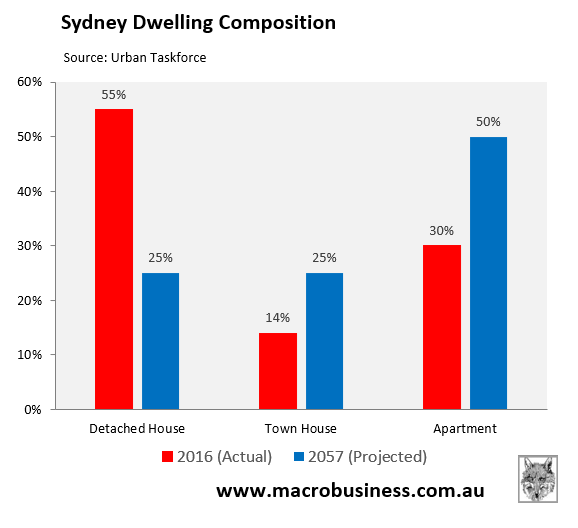
In summary, Australia’s immigration and housing policies discourage couples from starting families.
Housing and the associated costs of raising children have made raising a family a luxury in Australia.

